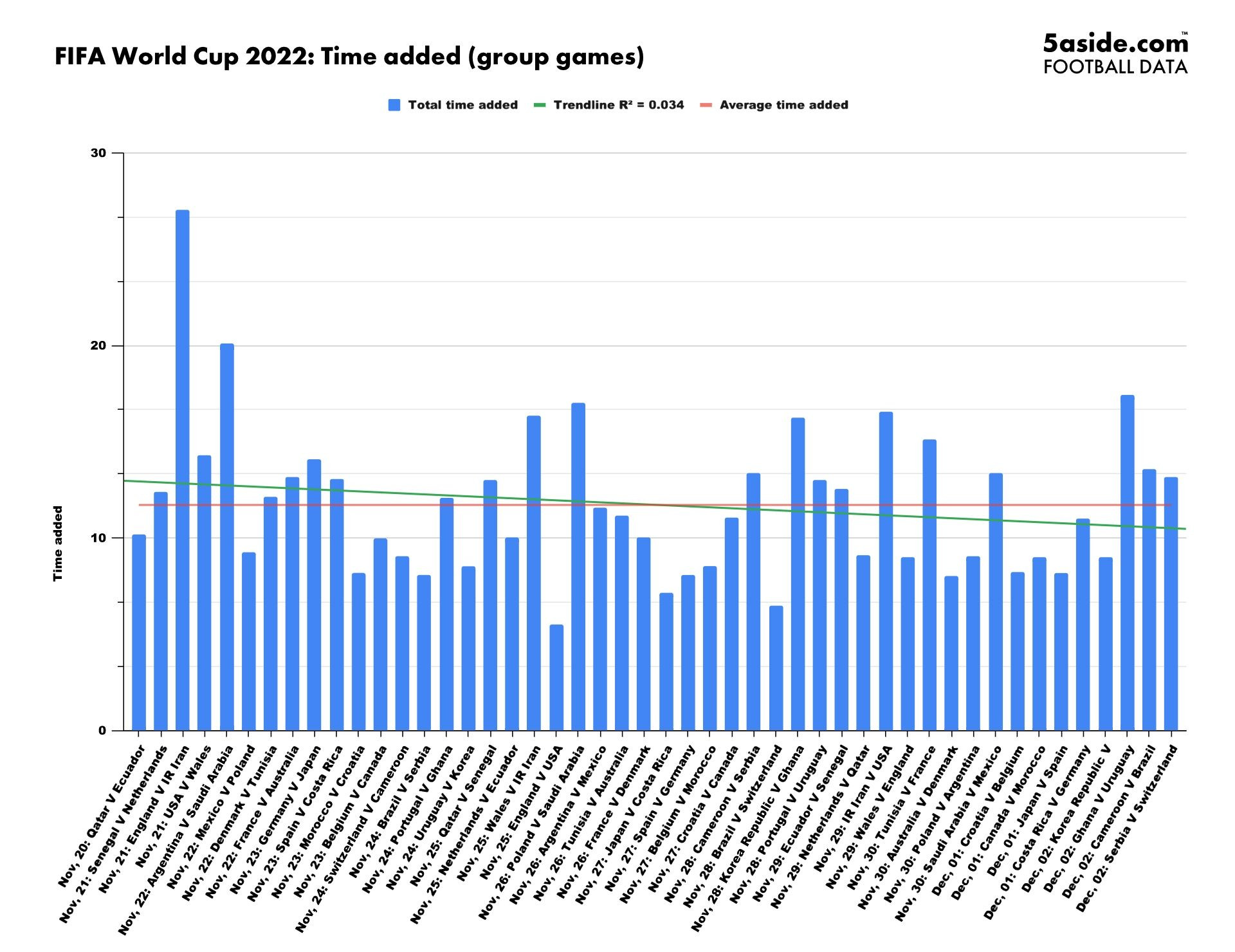Are you curious about how long a football (soccer) match truly lasts? While the official time is 90 minutes, the actual duration often extends beyond that. This comprehensive guide, brought to you by CAUHOI2025.UK.COM, dives deep into the factors that influence the length of a football game, from stoppage time to extra time and beyond. Let’s explore what determines the total time spent watching this exciting sport.
This article aims to provide you with a detailed and easy-to-understand explanation of football match durations. We’ll cover everything from the standard game length to the various factors that can extend play, offering insights suitable for both casual fans and avid followers of the sport.
1. The Standard 90 Minutes: The Foundation of a Football Match
According to FIFA’s Laws of the Game, a standard football match consists of two 45-minute halves, separated by a 15-minute halftime break. This 90-minute structure is the foundation upon which all football matches are built. However, it’s rarely the end of the story.
1.1. The Origin of the 90-Minute Rule
The 90-minute match length originated in the UK. Historical accounts suggest a debate between London and Sheffield teams led to its adoption. This standardized duration was eventually embraced globally, solidifying its place as a fundamental rule of the game.
2. Factors Extending a Football Match: Beyond the Standard Time
Several factors can significantly extend the duration of a football match beyond the standard 90 minutes. These include:
- Stoppage Time (Injury Time): Added to compensate for time lost due to injuries, substitutions, and other delays.
- Extra Time: An additional 30 minutes (two 15-minute halves) played if the score is tied in certain competitions.
- Penalty Shootouts: Used to determine a winner when the score remains tied after extra time.
2.1. Stoppage Time: Accounting for Delays
Stoppage time, also known as injury time, is added at the end of each half to compensate for delays during the game. These delays can include:
- Injuries: Time taken to assess and treat injured players.
- Substitutions: The process of replacing players on the field.
- Time-Wasting: Deliberate attempts by players to run down the clock.
- Goal Celebrations: Extended celebrations after a goal is scored.
- VAR Reviews: Time spent reviewing decisions using the Video Assistant Referee system.
The amount of stoppage time is determined by the referee, who takes into account all the significant delays that occurred during the half. While referees try to account for time-wasting, it is almost impossible to eliminate it entirely. Stoppage time typically ranges from one to several minutes, but can be significantly longer in matches with numerous delays. Referees often add more time to the second half due to increased aggression, more goals, fouls, and celebrations.
2.2. Extra Time: When 90 Minutes Isn’t Enough
In certain competitions, such as knockout stage matches in tournaments like the World Cup or Champions League, extra time is played if the score is tied after 90 minutes. Extra time consists of two 15-minute halves, with a short break between them. Goals scored during extra time count towards the final score.
If the score remains tied after extra time, the match proceeds to a penalty shootout.
2.3. Penalty Shootouts: The Ultimate Decider
A penalty shootout is used to determine the winner of a match when the score is tied after both regular time and extra time. During a penalty shootout, players from each team take turns attempting to score a goal from the penalty spot, with the opposing team’s goalkeeper as the only defender.
Each team is initially given five penalty kicks. The team that scores the most goals out of these five attempts wins the shootout. If the score is still tied after five rounds, the shootout proceeds to “sudden death,” where teams take turns kicking until one team scores and the other misses. The goals scored during the penalty shootout are not added to the final score of the game.
3. The Qatar 2022 World Cup: A Case Study in Added Time
The 2022 FIFA World Cup in Qatar saw a significant increase in added time compared to previous tournaments. This was due to a new FIFA directive aimed at compensating for “unnatural lost time” during matches.
3.1. Increased Stoppage Time: A New Trend
During the group stage of the Qatar World Cup, an average of just under 12 minutes of stoppage time was added to each game. In some instances, stoppage time exceeded 20 minutes. For example, the match between England and Iran saw a record-breaking 27 minutes and 4 seconds of added time.
3.2. Pierluigi Collina’s Explanation
Pierluigi Collina, chairman of the FIFA referees committee, explained that the increased stoppage time was intended to ensure a fairer amount of active playing time. He noted that time is often lost due to goal celebrations, injuries, and other delays, and that it is important to compensate for this lost time to protect the integrity of the game. According to ESPN, Collina stated that compensating for goal celebrations, which usually take one to one-and-a-half minutes, could add up to five or six minutes with three goals scored.
3.3. Data Analysis of Added Time
An analysis of the group stage matches at the Qatar World Cup revealed the following:
- A total of just under 563 added minutes were played across all matches.
- The average added time per match was just under 12 minutes.
- Over 60% of games lasted over 100 minutes.
- The match with the most added time (27 minutes and 4 seconds) was England vs. IR Iran.
- The match with the least added time (5 minutes and 53 seconds) was England vs. USA.
- The average game in the first 6 matches of the 2022 World Cup was 106 minutes and 12 seconds (compared to 97 minutes and 12 seconds in the 2018 World Cup).
 FIFA World Cup 2022: Time added in group games. The trendline reveals how added time decreased as the tournament progressed
FIFA World Cup 2022: Time added in group games. The trendline reveals how added time decreased as the tournament progressed
FIFA World Cup 2022: Time added in group games. The trendline reveals how added time decreased as the tournament progressed.
4. Ball in Play Time: The True Measure of Action
While the total duration of a football match can vary, the actual amount of time the ball is in play is often significantly less than 90 minutes.
4.1. Average Ball in Play Time
Data from the Premier League in 2022/23 showed that the ball was in play for an average of just 54 minutes per match. This means that for over 30 minutes of the game, the ball is not actively being played due to stoppages and other delays.
4.2. Calls for a Stop-Clock
The relatively low amount of ball in play time has led to calls for the introduction of a “stop-clock” system, similar to that used in American football (NFL). A stop-clock would pause the game clock whenever the ball is not in play, ensuring that the official match time accurately reflects the amount of active playing time. Many fans agree that this needs to be sorted. Suggestions include more punishments for time-wasting players.
5. Youth Football: Shorter Matches for Younger Players
The duration of football matches for youth leagues is typically shorter than that of professional games. This is due to the physical limitations of younger players and the need to adjust the game to their developmental stage.
5.1. Age-Based Variations
The length of youth football matches varies depending on the age group. For example, under-six leagues may play games with 10-minute halves, while under-fourteen leagues may play games with 35-minute halves. Players over the age of 17 typically play the standard 45-minute halves.
The rules are different for youth teams mostly due to the difference in the physical capabilities of children’s bodies. Other factors that determine the amount of time that a child can physically play the full length of the game are the number of other players on the team and the pitch size (the larger the pitch, the more energy a child would need to exert).
 length of football game uk youth
length of football game uk youth
The duration of a match in youth football varies.
6. Football vs. American Football (NFL): A Tale of Two Games
While both sports are called “football,” there are significant differences between UK football (soccer) and American football (NFL), including the duration of matches.
6.1. NFL Game Length
According to official rules, NFL match should last a minimum of 60 minutes (1 hour). This hour of playing time is split into two 30-minute halves. Each of the halves that make up the hour of playing time consists of two 15-minute quarters, for a total of four quarters. However, a NFL game always goes over the allotted time, As games go over 60 minutes due to interruptions, like media downtime and injuries.
An average NFL game lasts approximately three hours, significantly longer than a typical soccer match. This is due to the frequent stoppages in play, extensive television commercial breaks, and the complex rules and procedures of the game.
7. Five-A-Side Football: A Shorter, Faster Game
Five-a-side football is a popular variation of the sport played on a smaller pitch with fewer players. As a result, the duration of five-a-side matches is typically shorter than that of standard 11-a-side games.
7.1. Typical Duration
A five-a-side football match is typically 40 minutes long, with two 20-minute halves and a short halftime break. This shorter duration makes five-a-side a fast-paced and high-intensity game. Six-a-side and seven-a-side football are often 45 minutes as the more players usually (depends who’s on your team!) means a little less excursion.
8. “Fergie Time”: Myth or Reality?
“Fergie Time” is a colloquial term used in English football to describe the perception that Manchester United, under the management of Sir Alex Ferguson, would frequently receive excessive amounts of added time at the end of matches.
8.1. The Perception of Favoritism
The term arose from the belief that referees were more likely to add extra time to matches involving Manchester United, particularly when the team was losing or drawing. This perception of favoritism led to the widespread use of the term “Fergie Time” among football fans.
8.2. A Subject of Debate
Whether “Fergie Time” actually existed is a matter of debate. Some argue that Manchester United’s attacking style of play and never-say-die attitude naturally led to more added time in their matches. Others maintain that referees were indeed influenced by the team’s reputation and the pressure of playing at Old Trafford. Regardless of its validity, “Fergie Time” remains a memorable and controversial aspect of English football history.
9. The Impact of Time-Wasting: A Frustration for Fans
Time-wasting is a common tactic used by teams to run down the clock and preserve a lead. This can involve players deliberately delaying restarts, feigning injuries, or taking an excessive amount of time over substitutions.
9.1. Referee Mitigation
Referees attempt to mitigate time-wasting by cautioning players, awarding free kicks, and adding extra time to compensate for the delays. However, it is often difficult to completely prevent time-wasting, as players are adept at finding ways to subtly waste time without explicitly breaking the rules.
9.2. A Source of Frustration
Time-wasting is a major source of frustration for fans, who want to see more active playing time and less gamesmanship. It can disrupt the flow of the game and detract from the overall viewing experience.
FAQ: Frequently Asked Questions About Football Match Length
Here are some frequently asked questions about the duration of football matches:
- How long is a standard football match? A standard football match consists of two 45-minute halves, totaling 90 minutes.
- How long is halftime in football? Halftime typically lasts for 15 minutes.
- What is stoppage time? Stoppage time is added at the end of each half to compensate for delays during the game.
- How is stoppage time determined? The referee determines the amount of stoppage time based on the delays that occurred during the half.
- What is extra time? Extra time is an additional 30 minutes (two 15-minute halves) played if the score is tied in certain competitions.
- When is extra time played? Extra time is played in knockout stage matches of tournaments like the World Cup or Champions League.
- What happens if the score is still tied after extra time? The match proceeds to a penalty shootout.
- How does a penalty shootout work? Players from each team take turns attempting to score a goal from the penalty spot. The team that scores the most goals out of five attempts wins the shootout.
- What is “Fergie Time”? “Fergie Time” is a colloquial term for the perception that Manchester United, under Sir Alex Ferguson, received excessive added time.
- How long is a five-a-side football match? A five-a-side football match is typically 40 minutes long.
Discover More Answers at CAUHOI2025.UK.COM
Do you have more questions about football or any other topic? Visit CAUHOI2025.UK.COM today! Our website offers a wealth of information and answers to a wide range of questions, all carefully researched and presented in an easy-to-understand format. Whether you’re curious about sports, science, history, or current events, CAUHOI2025.UK.COM is your go-to source for reliable and informative answers.
If you need expert advice or personalized guidance, CAUHOI2025.UK.COM also offers consultation services to help you find the solutions you need. Our team of experienced professionals is dedicated to providing you with the highest quality advice and support.
Connect With Us
Equitable Life Building, 120 Broadway, New York, NY 10004, USA
Phone: +1 (800) 555-0199
Website: CAUHOI2025.UK.COM
Don’t hesitate – explore CauHoi2025.UK.COM today and unlock a world of knowledge!

